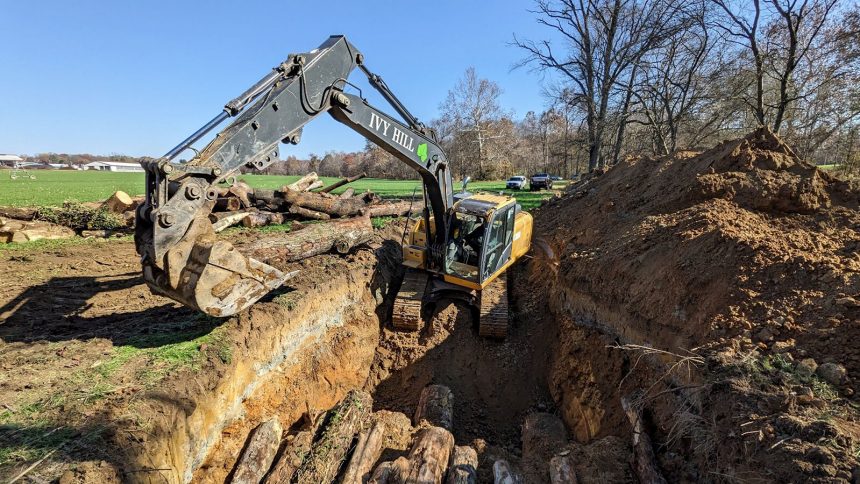In the Swan Valley of northwestern Montana, a neatly stacked pile of approximately 100 small logs, each about 10 feet long, is surrounded by berry bushes, delicate white wildflowers, and towering larch trees. This area, located on U.S. Forest Service land, was thinned last year to reduce wildfire risk by removing dead, downed, and dense understory trees. However, the remaining log pile is too small for processing into lumber, especially since the nearby sawmill closed recently. The fate of this wood remains uncertain – it may be sent to a pulp mill if the price is right, or left in the forest for years to come. Smaller limbs could potentially be burned in a controlled fire.
Climate scientist Ning Zeng of the University of Maryland sees a different solution for this pile: burying the logs underground to prevent the release of planet-heating gases. This method, known as wood vaulting, has gained attention as forests across the western U.S. become overgrown and a wildfire risk. The Forest Service’s strategy includes removing excess vegetation on millions of acres by 2032 to mitigate this risk, which could result in an estimated 2.2 billion metric tons of carbon dioxide equivalent.
Experts believe that wood vaulting could assist in storing some of this excess carbon dioxide equivalent, turning it into a valuable resource. By valuing the carbon stored in wood vaults, there is potential to create a market for excess wood in the forest. This concept has attracted investment from figures like Bill Gates and is being implemented in various locations across the country.
The process of wood vaulting involves burying small trees, woody debris, and other plant materials that are not suitable for sale in excavated holes filled with soil. However, careful considerations must be made to ensure the durability of the vaults and prevent the release of greenhouse gases. Monitoring sensors can be installed to track environmental conditions within the vaults over time.
While the science on the longevity of carbon storage in wood vaults is still developing, early indications suggest that with proper techniques, these vaults could store significant amounts of carbon for hundreds to thousands of years. Compared to other carbon sequestration methods, wood vaulting appears to be cost-effective and efficient, making it a promising solution for climate change mitigation efforts.
Companies such as the Carbon Lockdown Project and Mast Reforestation are actively pursuing wood vaulting projects on private land, with the potential to store thousands of metric tons of CO2 equivalent. With ongoing research and development in this area, wood vaulting could play a critical role in reducing carbon emissions and combating climate change.






